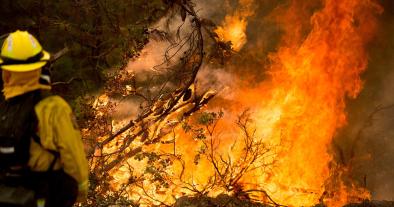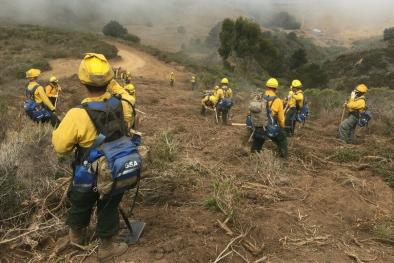Threat of climate change wildfires growing in Northwest

What happens when you combine forest management practices and mounting climate change? Wildfires. But not just your average fires. Climate change wildfires are expected to be much worse and much longer than in the past — especially in the Northwest.
...
“What we know is that the overall long-term trend is clear — climate change is contributing to longer, more intense wildfire seasons in the western US,” said Rachel Cleetus, lead economist and climate policy manager for the Union of Concerned Scientists.
Scientific evidence shows, Cleetus said, that the western wildfire season is lengthening. On average, wildfire season was about five months in 1970. Today, climate change wildfires are lasting as long as seven months and are expected to be longer in the decades to come.
“As temperatures increase, the area of land in the US projected to burn will also increase,” Cleetus said. “These worsening wildfire seasons are outstripping the capacity of state and federal agencies to respond and they are taking a terrible toll on communities in the path of these fires.”
“Simply put, our firefighting, forest management, and development polices haven’t caught up with the new realities of these worsening wildfires in a warming world,” she said.
Robert Scheller is an associate professor in the department of environmental science and management at Portland State University. He has been studying forests throughout Oregon and Washington over the past couple decades.
The important take away from what Scheller said last week is that Northwest forests are not monolithic — they will not all react to climate change in the same way. Some forests will handle the changes better than other areas. The coast, for example, will likely brave the warming temperatures fine. The eastern portions of the states will not fair as well against climate change wildfires. What is known is that climate change is coming, and its effects will dramatically change Northwest forests.
Effects will likely be a series of droughts, fires, and insect outbreaks — which has already happened in Canada. So far, Washington and Oregon have been spared from the effects of climate change. California, Canada, and Alaska — not so much. But the line between the affected regions is closing in on the two states.
“Unfortunately, it’s unlike that Washington and Oregon will continue to avoid the worst,” Scheller said. “Although, we don’t know the exact effects of climate change until it arrives, what we are seeing, particularly in California forests, I believe is a prelude to the climate change future of the Pacific Northwest.”
Dr. Randi Jandt, a fire ecologist with the University of Alaska Fairbanks is well aware of the problem as well. She has watched the boreal forests in her state.
“The boreal forests are particularly a good laboratory for seeing the climate-induced change vs change brought by human management,” she said. “Because of the relative lack of human disturbance and fire suppression.”
“Up there we are warming at about double the pace of the more temperate continental forests of the west,” Jandt said. “That’s about .7 degrees Fahrenheit per decade since about 1950.”
The two warmest years on record in Alaska were 2014 and 2015, Jandt noted. In just one week in 2015 the barrage of lightning ignited 295 new fires which spread exponentially. The fires ultimately consumed 5.1 million acres of the 8.8 million that burned in the entire United States that year.
“Warming is felt to be the primary driver behind the doubling of multi-million acres fire season we’ve observed in the last couple decades,” Jandt said. “We’ve seen the early disappearance of snow, higher surface heating due to the snow free vegetation, and ice-free oceans … shrinking in permafrost, and changes in forest composition. This has already happened, I haven’t gotten to the future scenarios yet.”
Scientists expect that by 2050, the type of warming causing climate change wildfires is expected to double
Related Content






